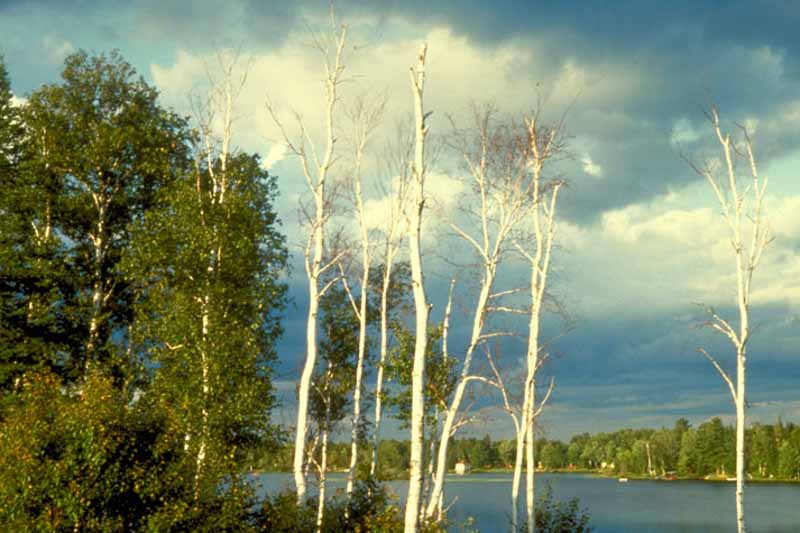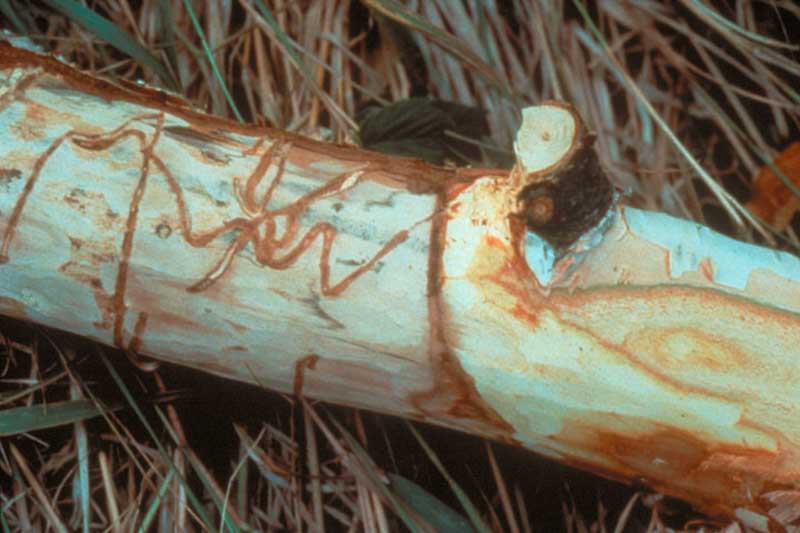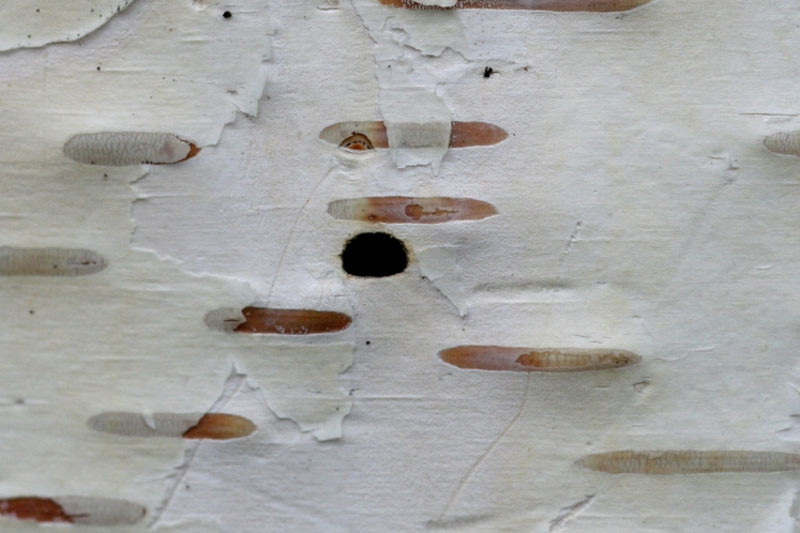The Bronze Birch Borer (Agrilus anxius) is a destructive wood-boring beetle that primarily targets birch trees. Its larvae tunnel into the inner bark and disrupt the tree's vascular system, causing extensive damage and potentially leading to the death of the tree.
The Bronze Birch Borer (Agrilus anxius) is a wood-boring beetle native to North America, known for its destructive infestations of birch trees. As the larvae feed beneath the bark, they can cause significant damage, often leading to the decline and eventual death of infested trees.
Bronze Birch Borers primarily infest birch trees (Betula spp.), including paper, gray, yellow, and European white birch. While they can attack healthy birch trees, they most commonly target stressed or weakened trees. Other species of trees can occasionally be infested, but this is less common.
The Bronze Birch Borer is found throughout North America but is most common in the northern United States and southern Canada.
Adult Bronze Birch Borers are slender, metallic beetles, typically measuring about 3/8 inch (1.25 cm) in length. They are dark, bronzy green, or black with a distinctive metallic sheen. They have elongated, slightly flattened bodies and the wing covers taper to a point at the end of the abdomen.
The larvae are legless, creamy white grubs with a distinctive, flat-headed shape and grow up to 1/2 inch long.
There is typically one generation per year, although development can take two years in cooler climates.

The Bronze Birch Borer can cause significant harm to birch trees, particularly those that are stressed or weakened. The primary damage is done by the larvae, which feed beneath the bark and disrupt the flow of water and nutrients within the tree.
The initial symptoms of an infestation can be subtle and may include sparse or yellowing foliage, particularly in the crown of the tree. Over time, as the larvae continue to feed, they create winding, serpentine galleries beneath the bark. This feeding activity can cause branches to wilt and die back, typically in the upper crown and progressing downward.
Eventually, a severe infestation can lead to the decline and death of the entire tree. This process can occur over several years, depending on the tree’s health and the infestation’s severity.
 Larval galleries under peeled bark Larval galleries under peeled bark |
 D-shaped exit hole D-shaped exit hole |
Detecting a Bronze Birch Borer infestation involves looking for both the damage caused by the borers and the presence of the borers themselves.
Early detection is crucial for effectively managing Bronze Birch Borer infestations and minimizing the damage they cause.
Managing Bronze Birch Borer effectively involves a combination of prevention strategies and, when necessary, control measures.
In conclusion, the best strategy against the Bronze Birch Borer is maintaining the overall health and vigor of the trees. Healthy trees can often resist and recover from borer infestations much more effectively than stressed or weakened trees.
Create a membership account to save your garden designs and to view them on any device.
Becoming a contributing member of Gardenia is easy and can be done in just a few minutes. If you provide us with your name, email address and the payment of a modest $25 annual membership fee, you will become a full member, enabling you to design and save up to 25 of your garden design ideas.
Join now and start creating your dream garden!
Create a membership account to save your garden designs and to view them on any device.
Becoming a contributing member of Gardenia is easy and can be done in just a few minutes. If you provide us with your name, email address and the payment of a modest $25 annual membership fee, you will become a full member, enabling you to design and save up to 25 of your garden design ideas.
Join now and start creating your dream garden!